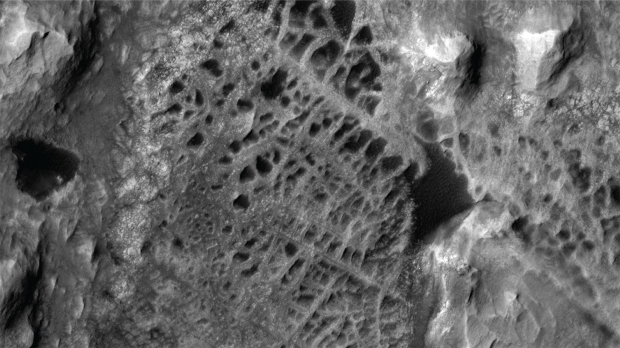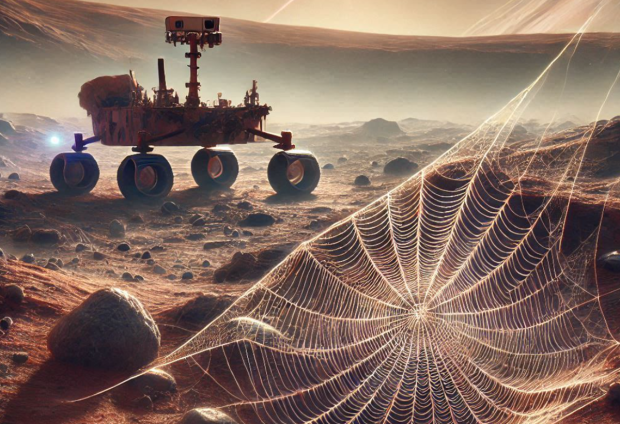NASA has selected giant Martian "spiderwebs" as the next target for the famed Mars rover named Curiosity, which will be traveling to a location known as "boxwork".

NASA has taken to its Jet Propulsion Laboratory (JPL) blog to announce that it will be sending the Mars rover named Curiosity on the next leg of its journey across the plains of the Red Planet. The journey will take Curiosity approximately a month, and the rover will be heading to a location known as "boxwork," which is a set of weblike patterns on the surface of Mars.
These weblike patterns stretch for miles, and Curiosity will soon be departing its current location in the Gediz Vallis, with the rover signing off in the area with a 360-degree panoramic image. Boxwork is a patch of zigzagging rocks, or boxwork deposits, and NASA plans to send Curiosity there to investigate the location for any signs of ancient microbial life, along with documenting the area so NASA researchers can attempt to understand how the land formation came to be. Notably, boxwork deposits aren't exclusive to Mars, as the geological formation can be found on Earth in caves.
These deposits form when calcite-rich water fills the tiny gaps between rocks and hardens, eventually eroding away and leaving behind "thin blades of crystalline material protruding from rocky walls." These aren't too dissimilar to stalactites and stalagmites.
But how do they form on Mars? Researchers believe that instead of water dripping through caves, which causes boxwork deposits here on Earth, Martian boxwork deposits were caused by veins or channels of mineral-rich liquid water. The researchers believe these veins of deposits could be evidence of liquid water oceans, lakes, rivers, and streams once existing on the surface of Mars.
"These ridges will include minerals that crystallized underground, where it would have been warmer, with salty liquid water flowing through," Kirsten Siebach, a Curiosity mission scientist at Rice University in Houston who has been studying the area, said in the statement. "Early Earth microbes could have survived in a similar environment. That makes this an exciting place to explore."



